Bill Rudd, 5th Light Horse
By Marg Powell, Specialist Library Technician, Metadata Services | 8 July 2015
Corporal William Henry Rudd, 11th & 5th Light Horse Regiments
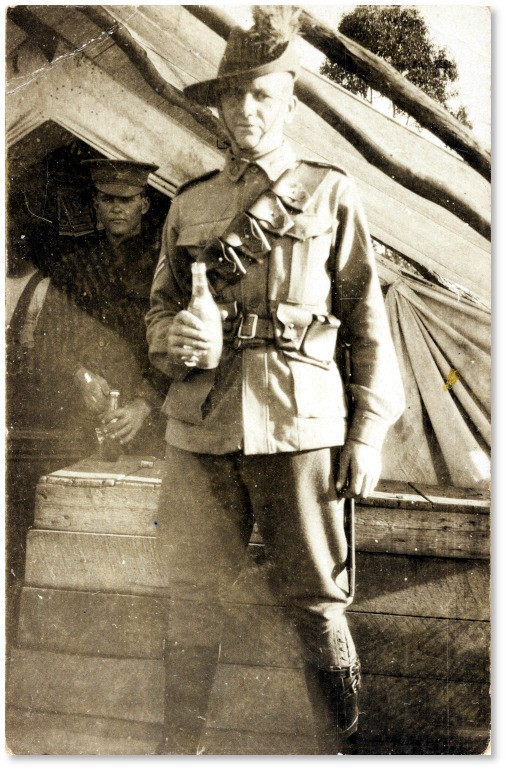
Corporal William Henry Rudd, B Company, 11th Light Horse Regiment, Enoggera, 1915. Image number: M946-0078-0029. M 946 Brett and Burley Family Records, State Library of Queensland.
This image of Bill Rudd was uncovered whilst curating another soldiers collection which relates to Cyril Brett. Almost 6ft tall, and just shy of this 20th birthday, he is pictured at Frasers Camp, Enoggera in 1915. He looks ready for anything - riding crop in one hand and a bottle of lemonade in the other.
One of three Rudd brothers (also Frank & Clive) to enlist from Rockhampton, their father, William Rudd (snr) was very well known for his association with Walter Reid & Co. and the Queensland Insurance Co.
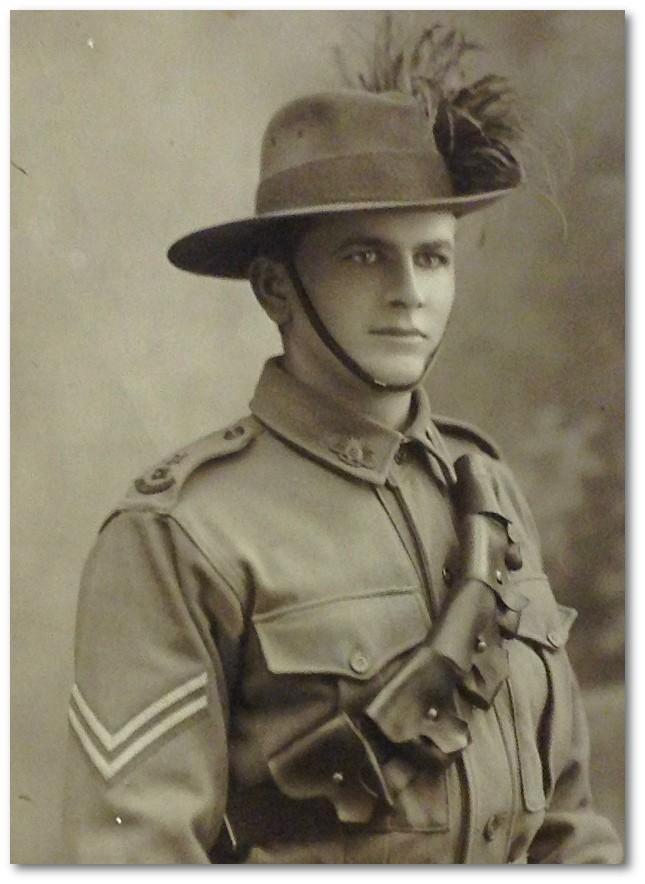
Studio portrait of William Rudd, 1914. Image number: M946-0044-0001. M 946 Brett and Burley Family records, State Library of Queensland
Corporal Rudd pictured just prior to embarking for Egypt, wearing the distinctive emu plumes of the Light Horse Regiments and leather ammunition bandolier.
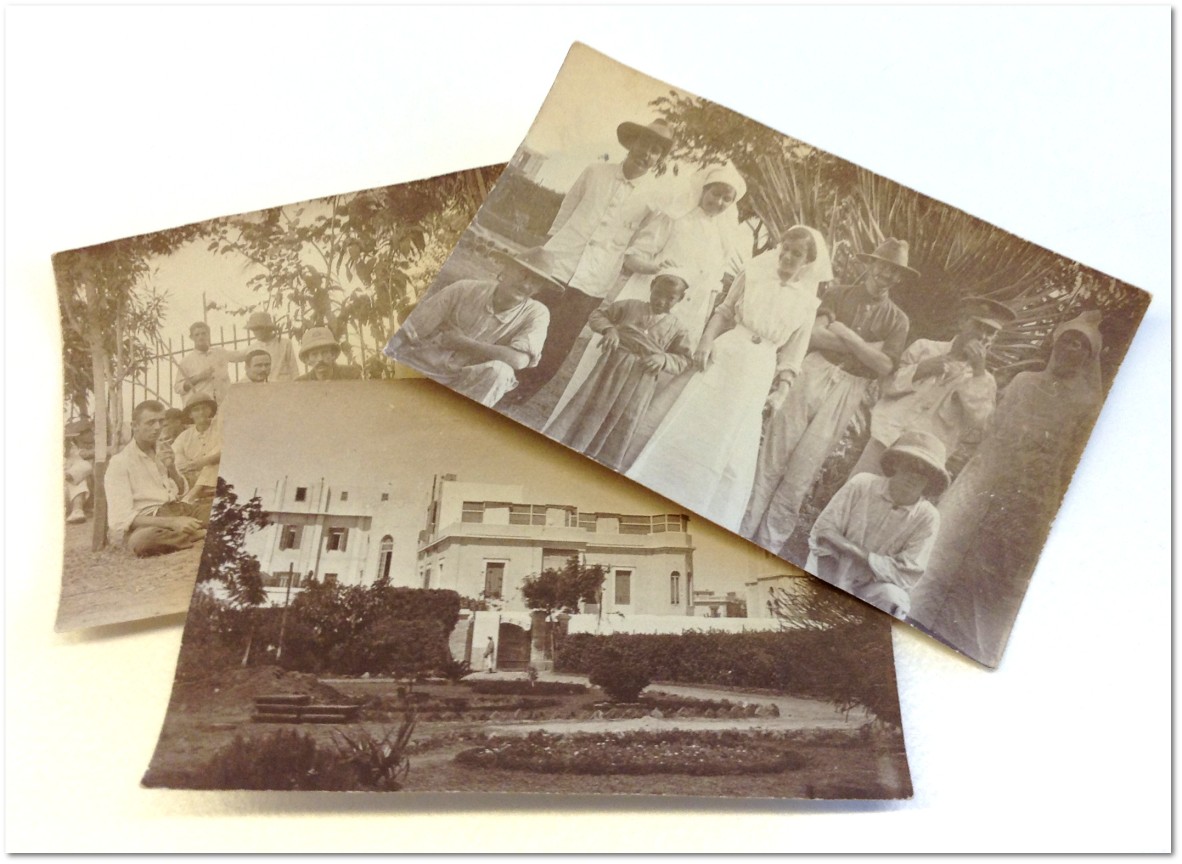
Staff and soldiers, Infectious Diseases Hospital, Choubra, Cairo 1915. Part of: M 946 Brett and Burley Family Records
Bill contracted Measles whilst he was in Egypt and spent 11 days being treated at the Infectious Diseases Hospital, at Choubra, Cairo. He returned to duty on 22nd August 1915 and embarked for Gallipoli. Just four weeks later, on the 24th September, Corporal Rudd was wounded, a bullet passed through his upper left arm. Described as 'slightly wounded' he was evacuated to St Elmo's Hospital in Malta, before being sent on to England for further surgery.
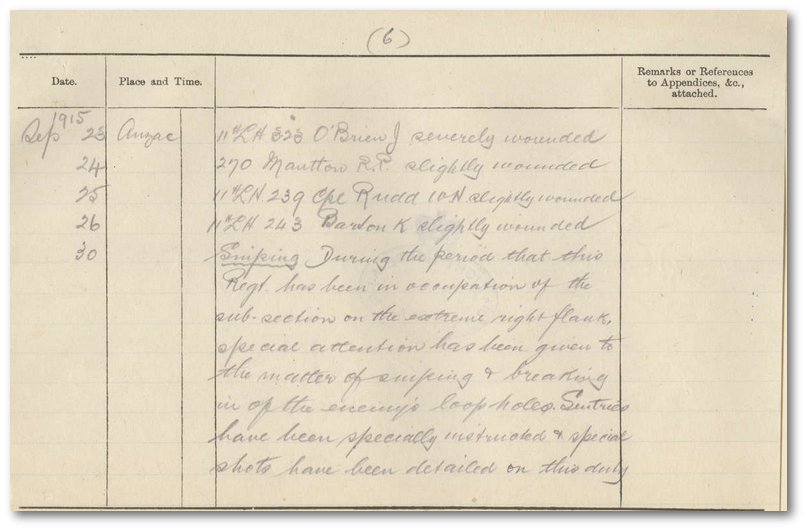
Extract from Australian Imperial Force Unit Diary, 5th Australian Light Horse Regiment, September 1915. Courtesy: Australian War Memorial.
His plight is recorded in the Unit diary for the 5th Light Horse Regiment, in September 1915. Bill Rudd's 'slight' wounding had severed nerves which caused considerable loss of sensation in his hand and fingers. By mid 1916 Corporal Rudd was discharged from the AIF as permanently unfit for active service. At his own request he was demobbed in England, and family connections gave him an introduction to a specialist doctor in Harley Street, London, who was able to save his arm, but could not restore the use of the fingers of his left hand.
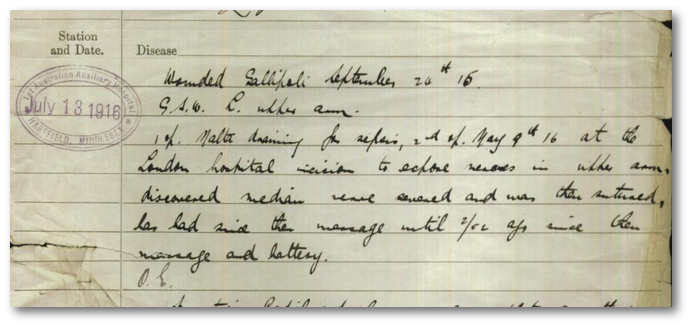
Extract from William Rudd's service record detailing his wounding, medical assessment and treatment. Courtesy: National Archives of Australia, Series B2455, Item ID 8072210
Bill Rudd made his way home to Australia and travelled to Winton where he accepted a job as manager of Austral Downs Station, a cattle station of 1.3 million acres which spans the borders of Queensland and the Northern Territory. He took over from the retiring manager, Henry Lamond, who was well known as a bushman and author.
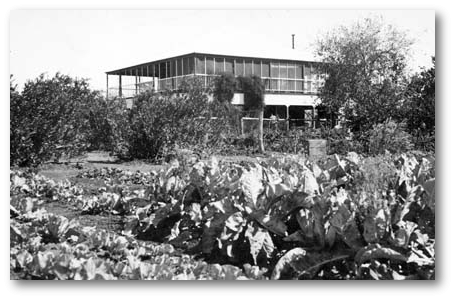
Austral Downs Homestead, taken from the vegetable garden, 1924. Image: National Archives of Australia, Item ID 7170473
In March 1919 he married Ruby Brabazon of Elderslie Station, his boss's daughter. Bill and Ruby worked tirelessly, managing the extensive property, and raising four children, Frank, William, Ruby & Charles. Ruby was well known in the district and elsewhere for her hospitality, in a region where goods were only delivered every six months via camel train, from the nearest railhead at Cloncurry.
There is a marvelous letter published in the Morning Bulletin, in 1920 by Bill Rudd's sister Iris about her experiences travelling by car from Winton to Austral Downs, and the country hospitality shown them by everyone along the way.
In the second instalment she writes "No doubt we have all had adventures along the way. Now that it is all over we see the funny side, but once in a lifetime is sufficient for such as we have been through."
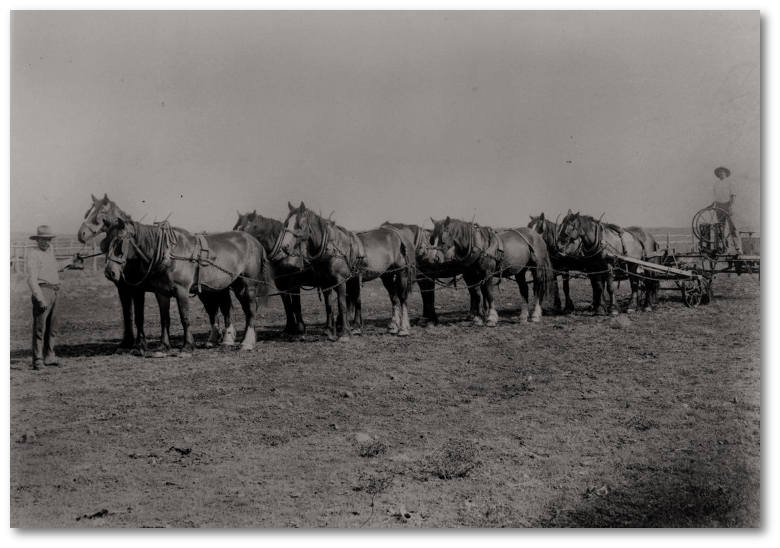
Elderslie Station team, 1924. Image: Negative number: 12629 State Library of Queensland
Austral Downs Station was sold in 1926 and not long afterwards Bill with his brother Harold purchased 'Kingsborough' a 32,000 acre property in the Aramac district, an area known for quality sheep production at the time and which could run up to 4,000 sheep. It was 300 miles nearer to markets and of course to schools for his children.
His father berated him for wanting to live out his dream in the bush - gambling hard earned money on what could be a disastrous venture. Ten years on however, the station became profitable, wool and lamb sales were healthy, they had survived the depression of the 1930s and Bill and Ruby remained on the property until his death in 1968.
But the question we always ask is why was Bill's portrait in the other soldier's collection?
The families that settled these vast properties would have of course shared may things including the privations of flood and drought, traded stock, greeted each other at church and community celebrations, and their children would have attended the same schools.
With considerable digging into the newspapers of the time, as well as family trees, we find that William Henry Rudd and Robert Cyril Palmer Brett shared grandparents, and Dorothea Brabazon (Bill's sister in-law) married Basil Brett (Cyril's brother).
Their service records and Cyril's diaries also reveal that they were admitted to the Military Infectious Diseases Hospital, Choubra, Cairo, with measles, within days of each other, and much much more ...
Bill Rudd's story has been uncovered, while looking for WW1 material that relates to Central and Western Queensland. The rich collection relating to Robert Cyril Palmer Brett includes diaries of his service in the 25th Infantry Battalion, loose photographs, albums and letters.
Further reading:
- Half a lifetime in the Australian Bush: a memoir by Frank Brabazon Rudd
- Service Record, William Henry Rudd, National Archives of Australia. Series B2455 Item ID 8072210
- Service Record, Robert Cyril Palmer Brett, National Archives of Australia. Series B2455 Item ID 3117907
- Embarkation Roll, William Henry Rudd, Australian War Memorial
- Austral Downs Station and Walgra Station Records, State Library of Queensland
- Elderslie by James Semple Kerr
- Rockhampton Lady's Experiences by Iris Rudd, Morning Bulletin, 6 July 1920, p6
Comments
Your email address will not be published.
We welcome relevant, respectful comments.